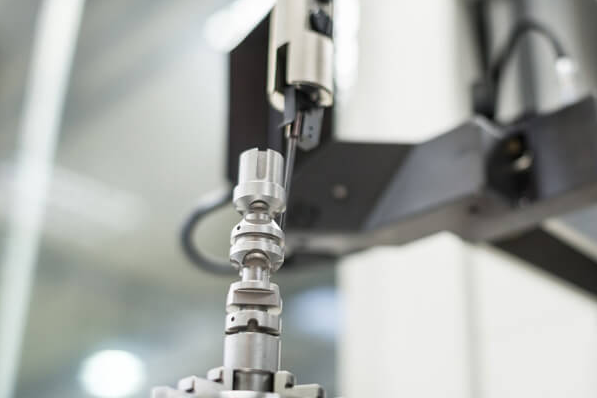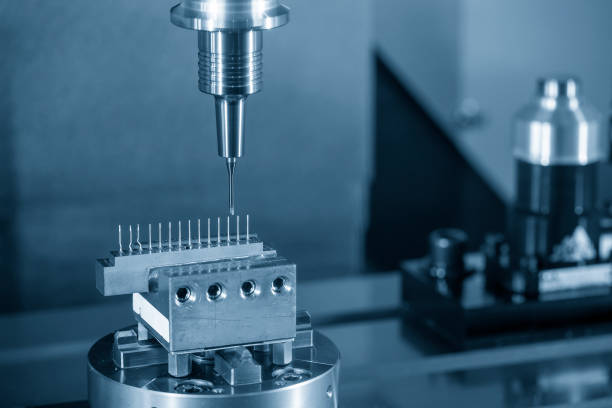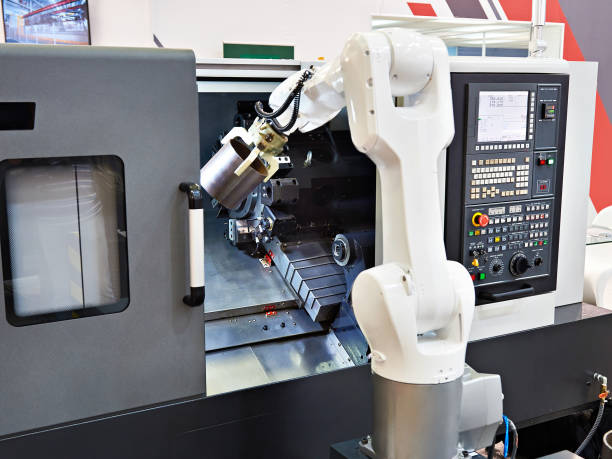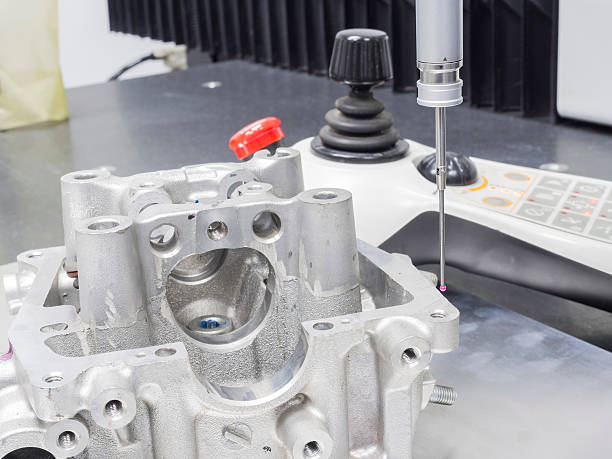As a CNC machining manufacturer, I appreciate the importance of accuracy in producing superior components. The cornerstone of successful CNC machining is precision, and it is only possible to achieve it with high-quality inspection techniques.
I will then proceed to take you through the comprehensive world of CNC inspection equipment, including the reasons why it matters, the types available, how you can select one, its application techniques, and the maintenance aspects. By the end of this article, you will be able to understand how you could apply inspection equipment to ensure precision in CNC machining.

In the case of CNC machining, there is no room for error in terms of precision. The last stage is achieving precision during manufacturing so as to yield high-quality products finally. The success of the outlined objectives depends on the use of CNC inspection equipment for consistent quality and improved performance of the machined parts.
When it comes to machine precision, it ultimately decides the quality of the machined components. Deviation of even the smaller aspect from the specified dimension can lead to substandard products that will not pass the prescribed parameters. Through the use of CNC inspection equipment, manufacturers are able to check that every component complies with the stipulation on quality, thus improving overall products' quality and reliability.
Tight tolerances have become the rule in the world of CNC machining rather than the exception. The tight tolerances must be met for the purposes of meeting the highly specific needs required by the components. Verifying that all the parts have the right dimensions, shapes, and other features within the tolerance limits is done using CNC inspection equipment.
Additionally, the achievement of the required surface finish is another critical aspect of CNC machining. The use of inspection equipment, including surface plates and laser scanning arms, enables manufacturers to check the actual surface quality of the machined parts and thereby detect any deviations that prevent attaining the required finish.
The incorporation of CNC inspection equipment in production makes it more efficient. Verification of the dimensions and features takes away the possibility of rework and rejects the production, which has made the whole process efficient.
One of these is reliability, an element that determines whether or not any given thing will be successful. The reliability of components depends on how precisely they are manufactured. Every individual part is inspected using CNC inspection equipment to verify that it fits standards, hence providing reliable products that customers depend on.
The key link here would be the CNC inspection equipment, which links the design requirements to the actually procured parts. A major function of this process is to ensure that the developed pieces meet the anticipated dimensions, tolerances, and finished surfaces. This certification process ensures that all the produced parts meet the standards so as to assure the accomplishment of the CNC machining success.
The usage of these versatile, accurate CMMs is common in the CNC machining industry. They rely on a probing system to ascertain the physical geometrical parameters of a component that deliver accurate dimensional figures for interpretation and validation. The CMMs can undertake complex shape inspections and, in many instances, critical dimensional ones.

The components are inspected with reference to surface plates called simply granite plates. The flats serve as plane measurement surfaces that allow assessment of flatness, straightness, and parallelism in machined parts. Surface plates are vital for making quality control measurements before the product is sold to the customer.
Laser scanning arms employ modern laser methods for measuring the 3D geometry of parts and ensuring full evaluation. They are especially suited for checking free-form surfaces' and complex geometry's exactness and surface quality in a machined part.

The go/No-Go gauges are simple but efficient verification instruments that allow for the quick confirmation of how good a given part is. These gauges, however, indicate whether a part is in-spec and help with rapid decisions to determine the quality of the manufactured components.
Micrometers are highly accurate measuring devices that can specify the dimensions of machine feature elements such as diameter, depth, and thickness. They provide high accuracy and allow making fine estimates in order to check the compliance of the parts to the requirements.
Calipers are very popular and handy measurement tools that are commonly used to measure the outside and inside of machined parts. They are indispensable in providing quick and accurate measurements for the dimensional accuracy assessment of components during the inspection process.
Air gages employ compressed air to ascertain different dimensions in components such as diameters, tapers, and grooves. They have a higher sensitivity, and they can be used to inspect components within narrow tolerances to guarantee the accuracy and dependability of measurement.
Selecting suitable CNC inspection devices can make or break your production operation’s quality, effectiveness, and dependability. Therefore, you will have to evaluate many variables to ensure you choose the best one for your production needs and business goals.
Selecting the CNC inspection equipment necessitates considering part feature complexity and the necessary tolerances. The geometry of different components, surface finish, and dimension vary, and hence, each component requires particular test abilities. Therefore, it is imperative for you to evaluate the wide scope of part characteristics and tolerances your business deals with and select suitable measuring instruments that are capable of properly analyzing these parameters. The CNC inspection equipment must be able to measure many data points in fine detail and identify any deviation from the design specifications.
Your production volume and the dynamics with which you operate the business will determine what type of CNC inspection technology you buy. In a high-volume manufacturing context, the measurements must be made rapidly and efficiently, and thus, the inspection equipment should also operate equally fast. In contrast, businesses producing at high volumes or with standard parts may prefer inspection equipment that is designed for simplicity in terms of maintenance and versatility for various product variations. The inspecting technology should be customized according to the particular requirements of production, and it must be carefully integrated into the ongoing workflow so that it can disrupt as much as possible while ensuring maximum efficiency overall.
The purchase of CNC inspection equipment is not cheap, and one should look at the ROI over the long term as against the initial acquisition cost. While calculating the total cost of ownership, it is important to consider not just the initial price but maintenance, training, and any potential upgrades as well. To that end, businesses ought to conduct an extensive cost-benefit analysis to establish the worth they will get from the inspection equipment, like higher quality levels, reduced scrap, enhanced productivity, and so on. Further, considering availing credit sources and vendor relationships can assist in maximizing the budgetary allocation for CNC inspection equipment.
The ability of operators who will use the CNC inspection equipment has a great impact on its performance, as well as its effectiveness. The chosen equipment should match the operators' skills and have simple interfaces and easily understood controls. Additionally, providing the operators with in-depth training on how best to enhance the use of the inspection equipment will guarantee high-quality results. Appropriate training increases efficiency, reduces the number of errors and rework, and thus decreases costs and improves quality.
The scalability of the CNC inspection equipment must be evaluated as the firms aim for uninterrupted increment. The selected equipment must respond to shifting production requirements, add product streams, and incorporate modern technology for effective examination. Scalability entails updating the equipment with more features or modules as and when the business grows in order to protect its long-term relevance and value. Considering scalability and projecting for future needs allows businesses to plan ahead and make strategic business decisions based on their goals and direction for development.
For continuous operation and enhanced productivity, it is vital that CNC inspection equipment mesh well into the prevailing manufacturing system. Businesses must check if the inspection technology can work with all production tools, data systems, and automatization options. To create an integrated manufacturing ecosystem, interoperability and the sharing of the inspection results are required across processes, which facilitate the overall improvement of operations. Furthermore, integrating complementary technologies like CAD/CAM software and digital quality control helps improve compatibility between departments in manufacturing.
Maintenance is required for sustained peak performance and the reliable functionality of CNC inspection equipment that should ensure fast response technical assistance. Equipment suppliers need to evaluate their service offerings like preventive maintenance programs and spare part availability among others. The robust support infrastructure ensures minimal downtime, and any issue related to the equipment is sorted immediately, hence guaranteeing production operations continuity. In addition, the use of predictive maintenance technologies and condition monitoring systems will improve the reliability and lifespan of the inspection equipment and ultimately lower the overall equipment operating costs, thereby achieving high performance in terms of operations.
However, obtaining the correct CNC testing tools is just a part of ensuring success with this technique. This paper presents, in detail, how incorporating smart use of CNC inspection equipment enhances precision and accuracy in production.
Creating detailed and thorough SOPs regarding the operation of the CNC inspection unit will prevent unrepeatable readings. The operators will follow SOPS that outlines the inspection methods, measurement methods, calibration procedures, and methods for recording the findings.
As such, accurate measurements can only be assured if the inspection equipment is regularly calibrated and verified. Regular calibration schedule and strict compliance to it ensures accuracy and credibility in the inspections, hence inspiring trustworthiness in the measuring outcomes.
It is recommended to have the operators who will operate the inspection tools sufficiently trained. This entails providing them with the necessary technical skills and information, something which boosts accuracy as well as pushes them towards a culture of high-quality and meticulous production processes.
One way of knowing about the quality and conformance of its made-up components is by analyzing the raw data of CNC Inspection tools. This enables the factories to evaluate their ways of process enhancement in order to improve quality and initiate corrective moves with the capability of analyzing and interpreting measurement data.
It cannot be overstated that achieving such a high yield would be meaningless without developing a culture of continuous improvement. Seeking effective means of measuring, workflow improvement within inspections, and application of inspection data enhances their continual increase in product quality and process efficiency.
Therefore, continuous repair is an essential requirement for CNC inspection equipment to serve effectively up to the expected duration of its lifespan. The failure to ensure that calibration devices are maintained appropriately could lead to decreased accuracy levels, operation errors, and added expenses due to high repair expenditure. Taking care of the CNC inspection equipment for best performance and reliability.

Preserving the accuracy and functionality of inspecting equipment entails keeping it clean with no dust or debris. Cleaning at regular intervals using appropriate tools and methods, along with protective covers and enclosure, ensures the protection of sensitive components of the inspection tools.
Lubricating components that involve moving parts, slides, and linear guides is a must for the proper working state of CNC. Regular lubrication, as suggested by the manufacturer, inspection of the components for worn-off surfaces, and smooth operation promote longer life of the machinery.
The inspection equipment needs a steady, calm atmosphere in order to make accurate measurements. It is important to avoid exposing the tools to very high, moderate, and low temperatures as well as humidity, among other environmental aspects that may compromise the accuracy of the devices.
An effective schedule that incorporates an ongoing routine of scheduled inspection must be established to ensure no surprises in terms of unexpected breakdowns and poor performance. Regular monitoring of wear, damage, and calibration drift extends the service life of the equipment and reduces downtimes.
To gain the benefits of the new functionalities, bug fixes, and efficiency improvements, it is crucial to keep the CNC inspection equipment's firmware and software updated. The equipment is constantly at the cutting edge as regular checks for updates are performed, followed by their controlled implementation.
However, the use of CNC inspection equipment as a tool of precision, as well as for the quality and reliability of machined elements, is one of the crucial points. As a result, manufacturers need to understand what precision matters means in CNC machining, how inspection equipment helps, and the different types of inspection equipment and selection criteria.
This provides a detailed outline of the usage of CNC inspection equipment and best practices in maintenance, hence paving the way towards achieving the highest levels of precision in CNC machining. Manufacturers should use modern inspection equipment to improve their CNC machining levels.
We hope that you have enjoyed this extensive guide to CNC testing instruments. For those who would like to know more about CNC inspection equipment and how it can enhance manufacturing processes, you can contact us for additional information.